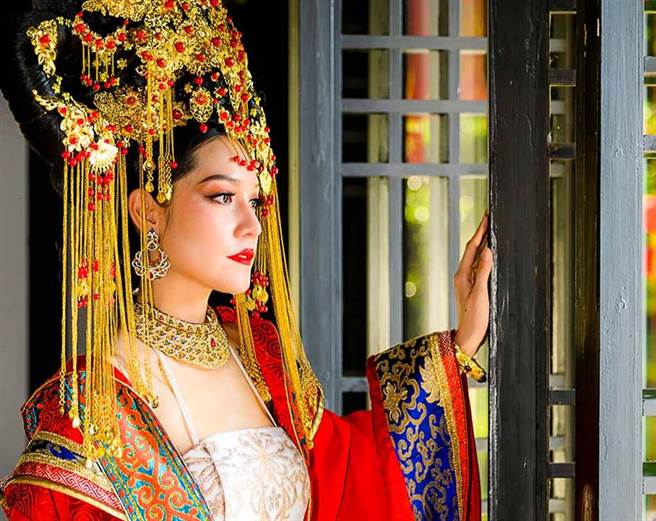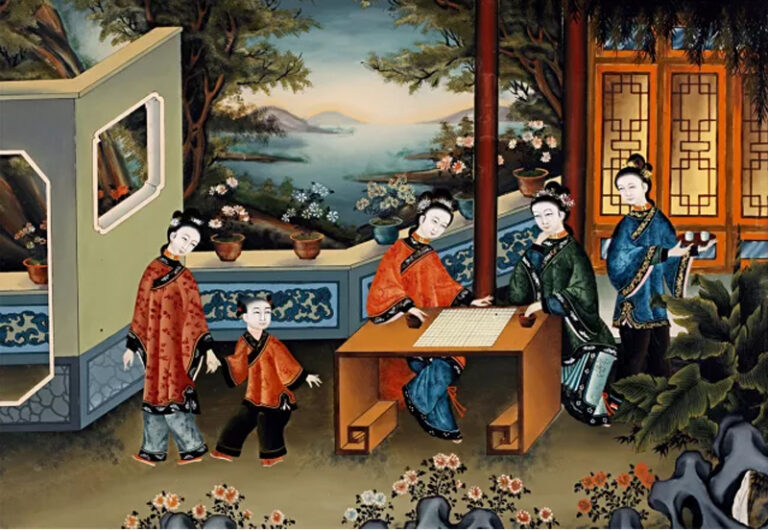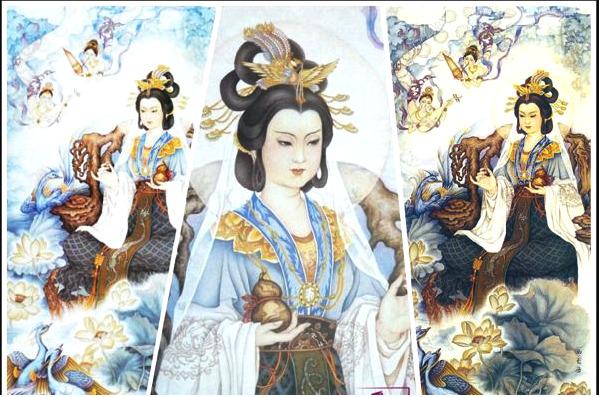
China and the World in the “Hidden” Changes of the Ming Dynasty
Since the reform and opening up, historians have been divided on whether ancient China implemented an open or closed policy that was in line with the historical conditions at that time. One of the focuses is the Ming Dynasty. An important reason for the disagreement is that the historians have different understandings of the concepts of openness and seclusion. Not only are there differences in understanding, but there is also a lack of comprehensive investigation and comparative analysis. Out of the need for political legitimacy, the Ming Dynasty ostensibly set its political goal to be a comprehensive “restoration”. However, in the practice of foreign exchanges, it did not adhere to the rigid rigidity of the past, but made innovations.
The Ming Dynasty’s foreign policy under “retro”
(1) Sino-foreign relations based on “no levy”
In Chinese history, there was no concept of a country in the strict sense, but it pursued a view of the world that “the king has no outsiders”. In the early Ming Dynasty, Zhu Yuanzhang also followed the example of the previous dynasty and sent envoys to surrounding countries to declare his orthodoxy, in order to establish his status as the co-lord of the world and continue the traditional tribute model. However, there are two obvious changes in specific policy orientation.
First, he actually launched his own view of the world. The traditional view of the world emphasizes that “the whole world is nothing but the king’s land” and has no boundaries. The world in Zhu Yuanzhang’s mind has transformed from a borderless “world” to a limited “world” – that is, China. On this basis, the Ming Dynasty began to have a relatively clear sense of boundaries with its neighboring countries, that is, “each defends its borders.” In September of the fourth year of Hongwu, Zhu Yuanzhang once instructed his ministers: “If there are overseas barbarian countries that cause harm to China, they must not refuse to punish them. If they are not Chinese patients, they must not raise their own troops.” In the “Huang Ming Zu Xun” in his later years, It also clearly proposed the concept of “countries not subject to conquest” and listed Korea, Japan, Annan and other countries as areas not subject to conquest.
The emergence of the “state without conquest” and its non-interference attitude towards the internal affairs of neighboring countries, coupled with the concept of “sharing the blessings of peace”, showed that the Ming Dynasty’s foreign policy had undergone major changes compared with the previous dynasty. Taking the interests of one’s own country as the starting point, he actually gave up the emperor’s right to conquer. This concept is completely different from the Yuan Dynasty’s foreign exchange model, and it is also fundamentally different from the overseas expansion of Western colonial empires.
(2) Adjust foreign policy at different times and always maintain the leadership in diplomacy
In the early Ming Dynasty, external relations were all-round, including land and sea. The Ming Dynasty sent Fu An on six missions and Chen Cheng on five missions to the Western Regions. Zheng He made seven voyages to the Western Seas, including losing Kazakhstan and sailing to Beihai on seven occasions. In particular, Zheng He’s voyages to the West greatly expanded the extension of the tribute system, objectively accelerating the political, economic, and cultural integration process between China and the Indian Ocean region, transforming today’s Northeast Asia, Southeast Asia, Central Asia, West Asia, South Asia, and even Vast places such as East Africa and Europe have become a community of interactive civilizations, building a new international system with win-win cooperation as its core.
The term “retreat” has existed since ancient times. The most typical policy of the Ming Dynasty’s external isolation appeared at the time of its first formal exchanges with the West. In the twelfth year of Zhengde (1517), the Portuguese envoy Tomé Pires came to China. The first formal exchange between China and Portugal ended in failure. In addition, the Portuguese’s illegal behavior in Guangdong led to the Jiajing Dynasty once ordering a ban on “Fanbo”, severely cracking down on Portuguese smuggling activities along the coast. This policy is the inheritance of the ancient tradition, that is, the “Book of Changes” “Even daily retreat, business travel is not possible.” In the thirty-sixth year of Jiajing (1557), the Ming court allowed the Portuguese to settle in Macau, but they had to bear tax and other obligations. Macau has always been under the effective jurisdiction of the Ming Dynasty government. The opening of Macao marked the opening of a window to the outside world for the Ming Dynasty.
In the late Ming Dynasty, Spain, the Netherlands and even the United Kingdom all tried to launch colonial activities in China, including armed invasions, but were repelled without exception (only Taiwan Island was once occupied by Dutch and Spanish colonists due to insufficient attention. ). The most typical incident was the intrusion of a British ship into Humen in the 10th year of Chongzhen (1637), which was the first direct collision between China and Britain. Chinese and foreign archives confirm that Britain’s attempt to invade China by force from the sea ended in failure; it also proves that until the middle of the 17th century, before the bourgeois revolution and the industrial revolution, Britain was in a significantly weaker position than China at that time. The Ming government always took the initiative in diplomacy.
(3) There are sea bans and partial seclusion, but there has never been a “lockdown”
In the early Ming Dynasty, due to the intrusion of Japanese pirates, many hostile forces in exile overseas, and the incomplete coastal defense construction, a maritime ban policy was implemented. But a maritime ban and a ban on foreign exchanges are not the same thing.
First, the maritime ban policy of the Ming Dynasty was aimed at its own people, with the purpose of cutting off hostile forces from obtaining logistical supplies and intelligence from the mainland. It was not aimed at overseas countries, nor was it a conscious attempt to close the country.
Second, during the implementation of the sea ban policy, the Ming Dynasty incorporated a large number of sailors left by hostile forces into the army, trained a powerful navy in a short period of time, and ensured the normal development of maritime activities with offshore patrols.
Third, although there is a maritime ban, it does not prohibit normal offshore production activities. At certain times, the Ming court did sacrifice some local interests and banned fishing and traders in the sea, but most of them were temporary bans, and they were not the basic national policy of the Ming government.
The Ningbo tribute incident that occurred in the second year of Jiajing (1523) was once regarded by many scholars as evidence that the Ming court took the initiative to cut off exchanges with Japan. However, a review of historical materials revealed that Xia Yan’s memorial during Ren’s appointment at that time did not propose the abolition of the Municipal Shipping Department and the severance of exchanges with Japan. In fact, the Ming Dynasty also accepted Japanese tribute envoys to China in the 18th year of Jiajing; during the Wanli War to Aid Korea, whether to grant Toyotomi Hideyoshi the right to pay tribute was still one of the main issues negotiated between the two sides. The war to aid Korea caused official diplomatic relations to be severed for a time.
Since the establishment of the Ming Dynasty, there has been the problem of “southern Japanese and northern captives”. Different from the sea, the Ming Dynasty did close the Jiayuguan tribute road many times in its interactions with Central Asian countries. Generally speaking, it used pressure as a means of restraint to maintain security within the pass.

The Changing Foreign Trade of the Ming Dynasty
(1) Foreign trade in the early Ming Dynasty was mainly tribute trade
The word “tribute” includes both diplomacy and trade. Tribute trade in the early Ming Dynasty can be roughly divided into four types: tribute trade, incidental item trade in tribute trade, direct trade by sending envoys overseas, and private trade.
China during the Ming Dynasty was undoubtedly the largest economy in the world at the time. In the early Ming Dynasty, foreign trade was mainly official tribute trade, including a certain amount of private private trade. In the late Ming Dynasty, Gao Yutai’s “Jingzhilu·Gongshi Kao” quoted the list of foreign items in the “Yongle Chronicles of the Emperor Ming Dynasty”, which clearly shows that Ningbo’s foreign trade was far more prosperous than in the Song and Yuan Dynasties. The main feature of foreign trade is “going out”. Zheng He’s voyages to the West brought foreign trade to an unprecedented peak.
(2) Foreign trade in the late Ming Dynasty dominated the Asia-Pacific trade circle with silver as the local currency.
Foreign trade in the late Ming Dynasty needs to start with the monetization process of silver. Gold and silver trading was banned in the early Ming Dynasty, but in the game between the market and the state, the monetization phenomenon of silver emerging from the market from the bottom up emerged, and it was officially recognized in the middle of the Ming Dynasty. Due to the limited amount of self-produced silver, it severely restricted the expansion of the domestic market, objectively forcing Chinese businessmen to obtain silver from overseas through trade and then invest it in the domestic market. First of all, in the 1540s, the rapid growth of Japan’s silver mine production was stimulated by China’s huge demand. The Portuguese entered the silk and silver trade at the same time. Secondly, in the 1670s, the Spanish occupied Manila, Philippines, and immediately understood that Chinese merchants only wanted silver in trade, so they opened up the Chinese port-Manila (Philippines)-Acapulco (Mexico)-Lima (Peru) shipping route , the “Manila Galleon Trade”, the so-called “Grand Triangle Trade” spanning three continents, mainly trading silver and Chinese goods.
Large-scale silver import was the main feature of foreign trade in the late Ming Dynasty. Insightful people in the Ming Dynasty had already seen that opening up the sea was the general trend and could only take advantage of the situation. Therefore, the Ming Dynasty’s measures had two points: First, in the first year of Longqing (1567), the sea was opened in Yuegang, Zhangzhou, Fujian, and “the two oceans were quasi-traded to the east and west.” The international trade system of the Ming Dynasty underwent fundamental changes, and the trade model changed from official tribute The shift from mainly trade to private private maritime trade has promoted the rise of private maritime business groups and the prosperity of overseas trade. The opening of the sea completed the transformation of tariffs from physical goods to currency, and also made the transition from ancient China’s maritime trade management to modern customs and its tariffs. Second, the opening of Macau in Guangdong marked the legalization of the Ming Dynasty’s introduction of foreign businessmen to operate maritime trade, and contributed to the rise of Guangzhou’s outer port. The Portuguese operated transit trade in Macao. With the active participation of Chinese businessmen, they opened up a number of international maritime trade routes with Macao as the center, promoted the great development of the maritime silk, porcelain and silver routes, and established a global international trade network. , becoming a historical witness to the beginning of economic globalization.
In short, from the 16th to the 17th century, most of Japan’s silver production and half of America’s silver production flowed into China. They were exchanged for commodities from China, which fully demonstrated the competitiveness of China’s foreign trade in the Ming Dynasty; taking the opportunity of silver monetization, with the help of The driving force of its own change actively moves toward and participates in shaping a “new” overall world, rather than being passively incorporated into a Western world trade system.

The Ming Dynasty held a generally open attitude toward Western civilization.
The Ming court and the public held an open and tolerant attitude toward the Western civilization that entered China after Jiajing. The early Jesuits adopted an adaptive approach (Matteo Ricci’s rules). Catholic culture and Western scientific and technological knowledge were recognized and accepted by a large number of Chinese scholar-officials. Peaceful communication style. Western missionaries adhered to the will of the Holy See and emphasized compliance with Catholic canon doctrines, which once caused fierce conflicts. The most typical one was the “Nanjing Mission Plan” in the 44th year of Wanli (1616). Although Emperor Wanli finally made the decision to expel the missionaries, he mainly expelled them from Nanjing and did not expel them all from China. The cultural exchanges between China and the West were not artificially completely cut off.
Generally speaking, the Ming Dynasty’s foreign policy continued the traditional tribute system on the surface, but its connotation has changed significantly. The foreign policy of the Ming Dynasty was not inward-looking. Zheng He’s voyages to the West opened up the land-sea Silk Road in the Indian Ocean, which opened the curtain on the birth of economic globalization on the sea. After experiencing interference from the West at the beginning of economic globalization, the Ming Dynasty closed its doors for a time. After quelling maritime intrusions, it turned to openness again. Due to the internal trend of change – driven by the monetization of silver, the Chinese began to take the initiative to go overseas, and Longqing’s sea opening policy greatly released this demand. China in the late Ming Dynasty was connected with the beginning of world economic globalization, and Ming people participated in the process of shaping the “new” world trade system and played a decisive role.

Source: Qiushiwang
Author: Wan Ming is the person in charge of the National Social Science Fund Project “Research on the Ming Dynasty Finance in the Sixteenth Century – Focusing on the Compilation of “Wanli Accounting Records”” and a researcher at the Institute of Ancient History, Chinese Academy of History

